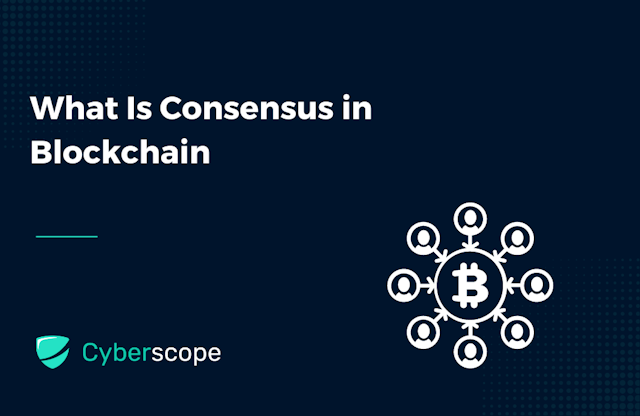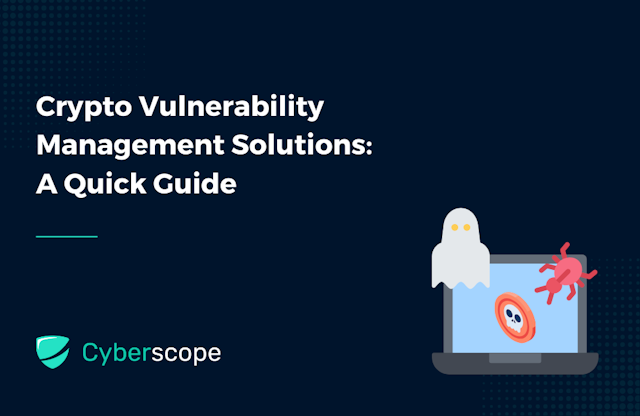

What is Restaking in Crypto? Everything You Need To Know

What Is Restaking?
Restaking has emerged as a pivotal strategy within blockchain networks like Ethereum, offering validators the opportunity to leverage their staked cryptocurrency across multiple platforms for enhanced security and trust. This practice not only allows validators to maximize rewards generated from their staked assets but also extends the cryptoeconomic security of large blockchain networks to emerging applications and protocols. EigenLayer, for instance, introduces restaking as an innovative primitive on the Ethereum blockchain, enabling users to actively participate in validating new applications while earning additional rewards. By operating as a decentralized trust market, EigenLayer facilitates cost-effective operations for protocols while leveraging Ethereum's robust security layer.
The rise in Total Value Locked (TVL) within EigenLayer signifies growing user engagement and confidence in the protocol, showcasing the dynamic potential of restaking to foster innovation and bolster security within the Ethereum ecosystem. Ongoing discussions among stakeholders emphasize the need to balance the benefits of restaking with mitigating potential risks, underscoring the importance of understanding and addressing these challenges.
Despite these concerns, the concept of restaking represents a dynamic approach to enhancing security and fostering innovation within the Ethereum ecosystem. Discussions continue among stakeholders to balance the benefits of restaking with mitigating potential risks, emphasizing the importance of understanding and addressing these challenges to ensure the long-term viability and sustainability of the blockchain ecosystem.
How Restaking Works
In the context of the Ethereum ecosystem, there are two primary methods for restaking: native restaking and liquid restaking.
- Native Restaking: This method is available to users who operate an Ethereum validator node. Validators are individuals or entities that validate transactions and create new blocks in the Ethereum blockchain. Specialized smart contracts manage the staked assets and their interaction with restaking protocols. Validators who choose to participate in native restaking agree to additional security terms set by the restaking platform. Essentially, validators stake their ETH directly into the restaking protocol, and they may receive additional rewards for doing so.
- Liquid Restaking: Liquid restaking leverages liquid staking tokens (LSTs). Here, users stake their assets with a validator and receive LSTs representing their stake in return. These LSTs can then be further staked on a restaking protocol to earn additional rewards. This method is particularly beneficial for small-stake holders who may not have the minimum 32 ETH required for direct staking on the Ethereum network. By pooling their assets with other users, they can still participate in staking and potentially earn rewards.
In both methods, the restaking protocol allows users to utilize their staked assets in other decentralized protocols to enhance their earning potential. Validators and nominators (those who nominate validators to stake on their behalf) can earn rewards both from the main Ethereum network and from the protocol they are restaked to. This multiplies the potential rewards for participants, but it also comes with increased risks, such as potential slashing of rewards for misbehavior.
Native Restaking vs. Liquid Restaking
Native restaking mirrors the familiar process of staking ETH directly, requiring users to operate or already possess an Ethereum validator node. The twist with native restaking lies in designating an EigenPod as the withdrawal address for the stake. On the other hand, liquid restaking involves locking tokens in a smart contract to receive liquid staking tokens (LSTs) in return, which can be utilized across DeFi applications. Users then deposit these LSTs into EigenLayer contracts for liquid restaking. EigenLayer supports staking for 12 LSTs, such as rETH, stETH, and cbETH. Platforms like Renzo and EtherFi further expand liquid restaking possibilities, exchanging LSTs for Liquid Restaking/Receipt Tokens (LRTs). Recent developments have seen the emergence of additional liquid restaking platforms, offering users the opportunity to restake their LSTs for LRTs, thus broadening restaking utility.
Learn More: Liquid Restaking Tokens: What Are They and Why Do They Matter?

What is EigenLayer and How it Works?
EigenLayer represents a groundbreaking protocol within the Ethereum ecosystem, aimed at bolstering cryptoeconomic security and streamlining the integration of new applications. Central to EigenLayer is the introduction of a pioneering concept termed "restaking," which empowers ETH stakers to broaden their support beyond conventional staking methods. This approach enhances network security and fosters wider adoption of decentralized applications (dApps).
With EigenLayer, stakers gain the ability to engage in smart contracts facilitating the restaking of their ETH holdings. This innovative mechanism not only fortifies the security of the Ethereum network but also extends its protective reach to encompass additional applications and projects constructed atop it. Essentially, EigenLayer serves as middleware, commodifying decentralized trust by harnessing the robust security infrastructure of Ethereum.
EigenLayer introduces modular security for Ethereum by allowing ETH stakers to contribute to specific functionalities called modules. These modules secure various applications like decentralized storage and DeFi. EigenLayer's restaking mechanism enables users to repurpose their locked ETH to enhance security for other applications. Users opt-in to grant EigenLayer additional enforcement rights, allowing it to restake ETH and enforce slashing conditions to deter malicious behavior. This aggregation of security extends validation services beyond Ethereum, fostering broader adoption of decentralized applications.
See also: What is restaking, and how to restake Ethereum to boost rewards?
Benefits of Restaking
- Improved Rewards: Stakers have the opportunity to increase their earnings by staking assets on two networks simultaneously, effectively doubling their staking rewards.
- Increased Security: When more assets are staked, the network's overall value increases, making it more resilient against potential attacks. This increased security makes the network a more reliable hub for decentralized applications (dApps), protocols, and platforms.
- Reduced Dumping: Restaking makes the original token more versatile, which can discourage investors from selling off their tokens en masse (dumping). This increased utility helps maintain the project's value and stability, benefiting both the project and its investors in the long run.
In summary, the benefits of enhanced staking rewards and improved security measures contribute to a more robust and sustainable blockchain ecosystem, while the benefits of restaking offer stakers the opportunity to maximize their earnings and contribute to the security and stability of the networks they participate in.
Concerns of Restaking
Let's delve into more detail on each of the risks associated with restaking protocols:
- Increased Yield and Risk: Restaking protocols often promise enhanced yields by allowing users to restake their rewards automatically. While this can increase potential earnings, it also amplifies risk. By continuously restaking assets, users are exposed to the risk of losing both their initial stake and accrued rewards if the validator or underlying protocol fails or is compromised. Additionally, the compounding effect can lead to a higher degree of financial exposure than initially intended.
- Excessive Leverage: Restaking protocols inherently involve leveraging one's assets to earn additional rewards. However, excessive leverage can magnify the impact of market fluctuations and increase the risk of loss. If a large number of users leverage their assets through restaking, it could create systemic risks within the blockchain ecosystem, especially during periods of heightened volatility or market stress.
- Systemic Risk: Restaking protocols introduce systemic risks to blockchain networks, as they often rely on a network of validators to secure transactions and maintain network integrity. If a significant portion of validators within a network are compromised or experience technical issues due to the restaking process, it could undermine the overall security and stability of the blockchain ecosystem. This systemic risk could potentially impact not only the restaking protocol itself but also other applications and users relying on the underlying blockchain network.
- Exploitation: Restaking protocols are not immune to exploitation or vulnerabilities. The 2022 exploit of Ankr, a restaking protocol built on the Binance Smart Chain (BNB) network, serves as a cautionary example. Exploits could arise due to flaws in the protocol's code, vulnerabilities in underlying blockchain infrastructure, or malicious activities by bad actors. Such exploits can result in financial losses for users and damage to the reputation of the restaking protocol and the blockchain network it operates on.
These risks underscore the importance of thorough risk assessment, robust security measures, and transparent governance mechanisms when designing and utilizing restaking protocols within blockchain ecosystems.
Restaking Process
Restaking on EigenLayer offers two distinct methods:
- Independent Staking: Users have the option to manage their own nodes and directly validate transactions for the modules. This approach is better suited for experienced users comfortable with the technical intricacies involved.
- Delegation: EigenLayer also permits users to delegate node operation to other participants within the network. This provides a convenient alternative for users who wish to contribute to EigenLayer without engaging in the technical aspects themselves.
Examples of Other Restaking Protocols
Beyond EigenLayer’s Ethereum-based restaking protocol, other instances of the restaking protocols are in early development across other leading Layer 1 blockchains.
Bitcoin: Babylon
Solana: Picasso
Near: Octopus 2.0
The Future of Restaking
Looking ahead, the future of restaking heralds a substantial leap forward in blockchain technology, particularly within proof-of-stake (PoS) networks such as Ethereum. Restaking empowers validators to reallocate their staked assets across a spectrum of PoS services, effectively mitigating inherent constraints in conventional staking frameworks. This pioneering approach not only amplifies potential rewards for validators but also fortifies network security through resource aggregation and cross-platform sharing.
Conclusion
In conclusion, restaking not only offers an alternative to traditional staking methods but also introduces a new layer of flexibility and utility within blockchain ecosystems. Native restaking, by integrating seamlessly with established processes like ETH staking, appeals to users already engaged in validator node operations. Meanwhile, liquid restaking opens doors to broader participation by converting staked assets into liquid tokens usable across decentralized finance (DeFi) applications.
With platforms like EigenLayer supporting multiple liquid staking tokens and protocols like Renzo and EtherFi expanding restaking options, the landscape of restaking is continuously evolving. This evolution signifies not just a shift in staking mechanisms, but also a deeper integration of blockchain networks into the broader financial landscape. As users explore these innovative approaches, restaking emerges as a vital component in maximizing both participation and utility within decentralized ecosystems.


